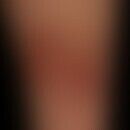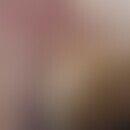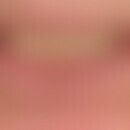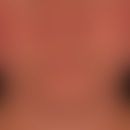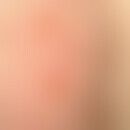Synonym(s)
HistoryThis section has been translated automatically.
DefinitionThis section has been translated automatically.
You might also be interested in
Occurrence/EpidemiologyThis section has been translated automatically.
EtiopathogenesisThis section has been translated automatically.
Mutations of the BLM gene mapped to gene locus 15q26.1 with consecutive disruption of the DNA helicase RECQL2. This DNA helicase is involved in the opening of double-stranded DNA prior to its replication, as it is in Werner syndrome. In somatic cells of patients with Bloom syndrome, a 10-fold increased rate of sister chromatid exchanges is found compared to non-mutated human cells.
Mutations in the LIG1 gene are also associated with this syndrome.
Other DNA repair defects are also observed. The gene defect leads to chromosome instability upon UV irradiation.
ManifestationThis section has been translated automatically.
ClinicThis section has been translated automatically.
The clinical picture can be summarized under the descriptive term "photosensitive male dwarfs".
Integument: Butterfly-shaped facial erythema, interspersed with telangiectasias, reminiscent of lupus erythematosus, telangiectasias of the back of the hand and forearms. Intensification under the influence of sunlight, possible blistering of lips and eyelids. Frequently café-au-lait stains, possibly acanthosis nigricans benigna.
Extracutaneous manifestations: Proportioned small growth with a final height of less than 150 cm; characteristic long, narrow face with a narrow nose and receding forehead. In male patients azoospermia with consecutive infertility with otherwise normal sexual development. Normal intelligence. More frequent infections. Early development of neoplasia, especially lymphatic and myeloid leukemias, lymphomas, carcinomas of the oral cavity and gastrointestinal tract.
LaboratoryThis section has been translated automatically.
TherapyThis section has been translated automatically.
Progression/forecastThis section has been translated automatically.
LiteratureThis section has been translated automatically.
- Bloom D (1954) Congenital teleangiectatic erythema resempling lupus erythematodes in dwarfs. Probably a syndrome entity. Am J Dis Child 88: 254-758
- Gretzula JC et al (1987) Bloom's syndrome. J Am Acad Dermatol 17: 479-488
- Hübinger L et al (2014) Genodermatoses with malignant skin tumors. Dermatologist 65: 520-535
- Mayershausen W et al (1988) Congenital teleangiectatic erythema (Bloom syndrome). Dermatologist 39: 363-367
- Meetei AR (2003) A multiprotein nuclear complex connects Fanconi anemia and Bloom syndrome. Mol Cell Biol 23: 3417-3426
- Yankiwski V et al (2000) Nuclear structure in normal and Bloom syndrome cells. Proc Natl Acad Sci USA 97: 5214-5219
Incoming links (21)
Acanthosis nigricans in hereditary syndromes; BLM Gene; Bloom-torre-machacek syndrome; Café-au-lait stain; Cockayne syndrome; De sanctis-cacchione syndrome; Erythema, congenital telangiectatic; Erythema teleangiectaticum congenitale; Facial erythema; Familial cancer syndrome; ... Show allOutgoing links (11)
Acanthosis nigricans benigna; Azoospermia; BLM Gene; Bubble; Café-au-lait stain; Immunodeficient t-cell primary; LIG1 Gene; Light protection; Light stabilizers; Lupus erythematosus (overview); ... Show allDisclaimer
Please ask your physician for a reliable diagnosis. This website is only meant as a reference.
